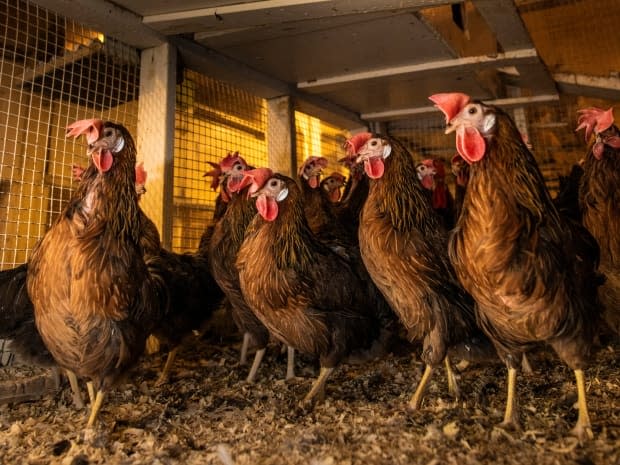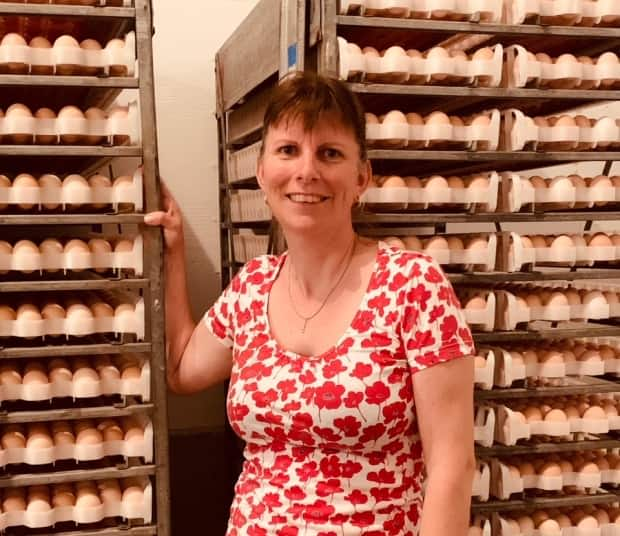'It weighs very heavily': B.C. livestock farmers on adapting to the challenges of rising temperatures

While wilted plants and dry, cracked soil have become the defacto symbol of this summer's sweltering temperatures across the West, livestock farmers in B.C.'s Lower Mainland have also had to make changes in order to protect their animals from high temperatures.
Beata Kunze, a poultry farmer in the Fraser Valley, says despite having invested in a cooling system for her barn in 2012, her flock suffered under the scorching temperatures of B.C.'s late June heat dome.
"It's a wonderful cooling system, and it worked really good until probably 41 C," Kunze told host Gloria Macarenko on CBC's On The Coast.
"But in our valley, it actually hit 45 C, believe or not. Nothing moved. The air was just still the whole three days. It was like a hot cauldron."
At least 10 per cent of her flock perished.
"Chickens cannot sweat. They pant. They lift their wings up. The best [way] to keep them cool is air, moving lots and lots of cool air."
The losses were devastating both to her farm's production — and her mental health.
"It weighs very heavily on our minds," she said. "You look at the numbers and you know the eggs are missing. You look at your barns, and you see the barn is sparse. There is a lot of room now because the birds are not there. They are missing."

Climate change has become a massive challenge for farmers like Kunze, says Lenore Newman, the director of food and agriculture at the University of the Fraser Valley. She says farmers will have to find ways to innovate if they want to keep up production — and if B.C. wants to maintain the food supply.
The key is to think outside the stereotypical red barn and tractor farm model of the past, she says, and embrace the potential in technologies like vertical farming, increasing greenhouse use, and streamlined government policy.
"We just can't farm the way our great-grandfathers did. We don't live in their world and we don't live in their climate," Newman said.
Kunze's next-door neighbour, dairy farmer Robert Dale, fared better in the heat wave. His cows survived, although production dipped during the hottest days.
Dale had put large curtains on the side of the barn to take advantage of the breeze and installed large fans. His cows had lots of water and lots of extra room on hand.
"It was very stressful, of course, for us, worrying about the cows and doing our best for them," Dale said. "In hindsight, I think we did fairly well."
He says, he too, is considering what other upgrades he can put in given the shifting climate — including new cooling systems and growing more drought-resistant crops.
Dale says one innovation he is considering is putting solar panels on his barn roof to generate electricity and cool his barn with an extra layer that reflects solar energy.
"Being farmers, we'll innovate, persevere and make the best of what comes our way," Dale said.
Kunze will be looking at whether any of her losses can be recovered via insurance at the end of the year. In the meantime, she says it's important to consider who will bear the costs of these climate change-induced innovations.
"We have to make investments into our farms and upgrades. It will cost money. It can't just sit on the shoulders of the farmers. Somehow, it has to trickle down to the consumer, because it is a lot of money to do upgrades and build new barns and invest in your farms."

